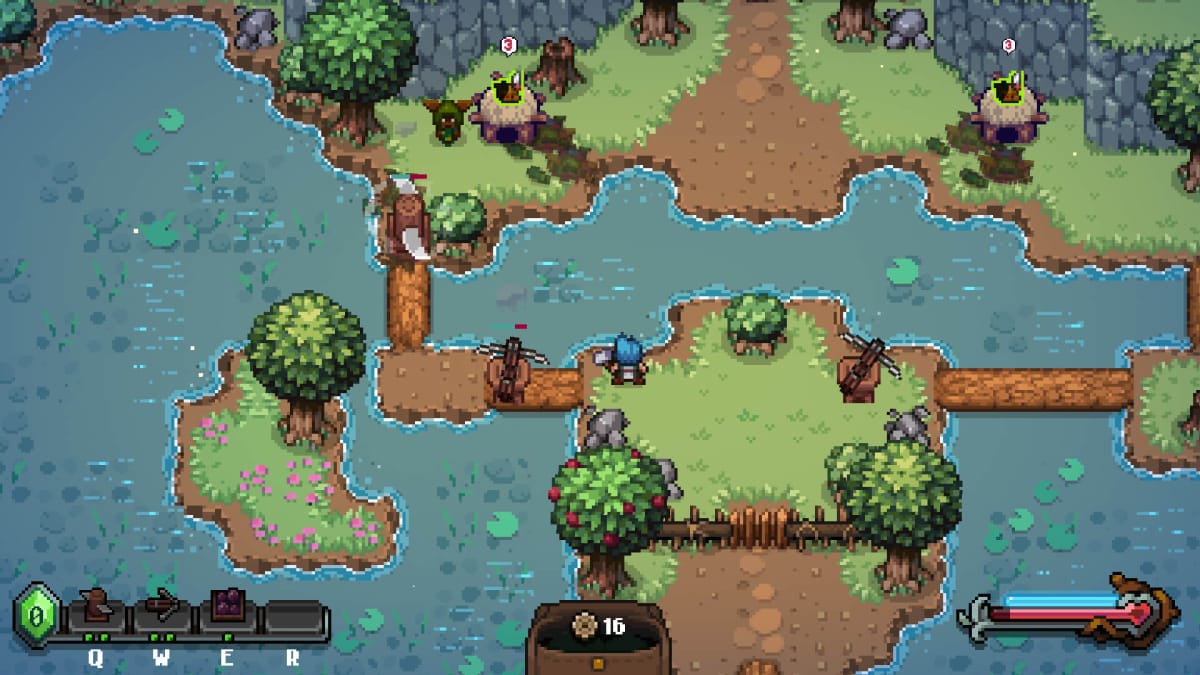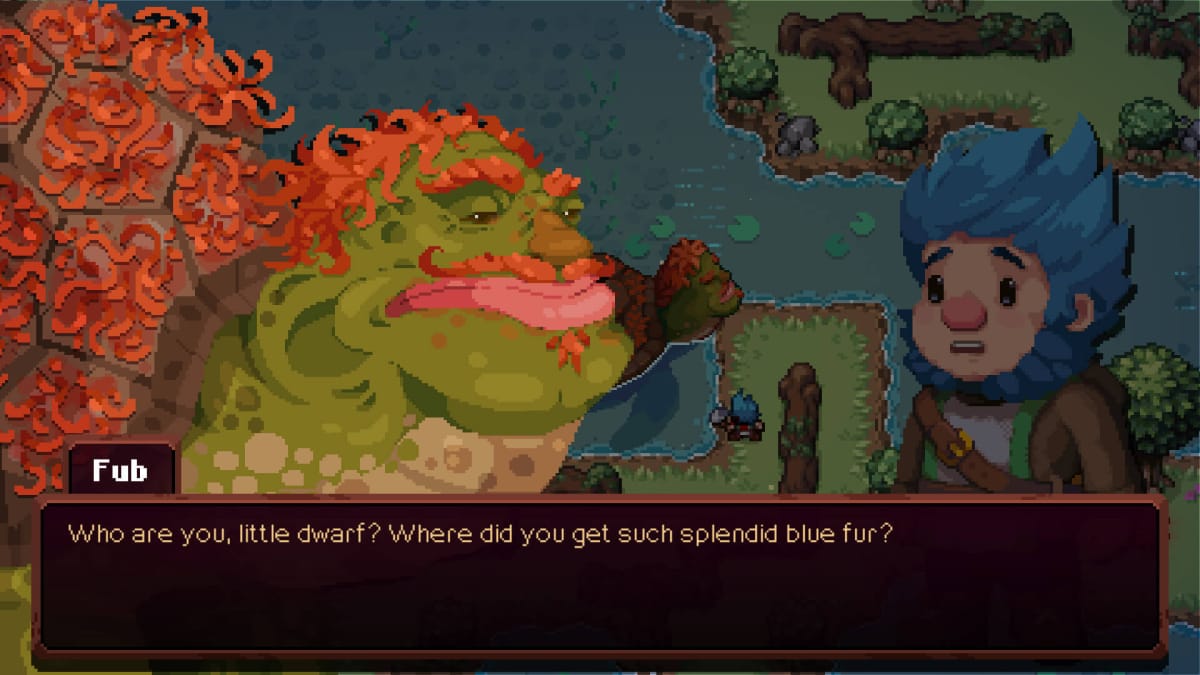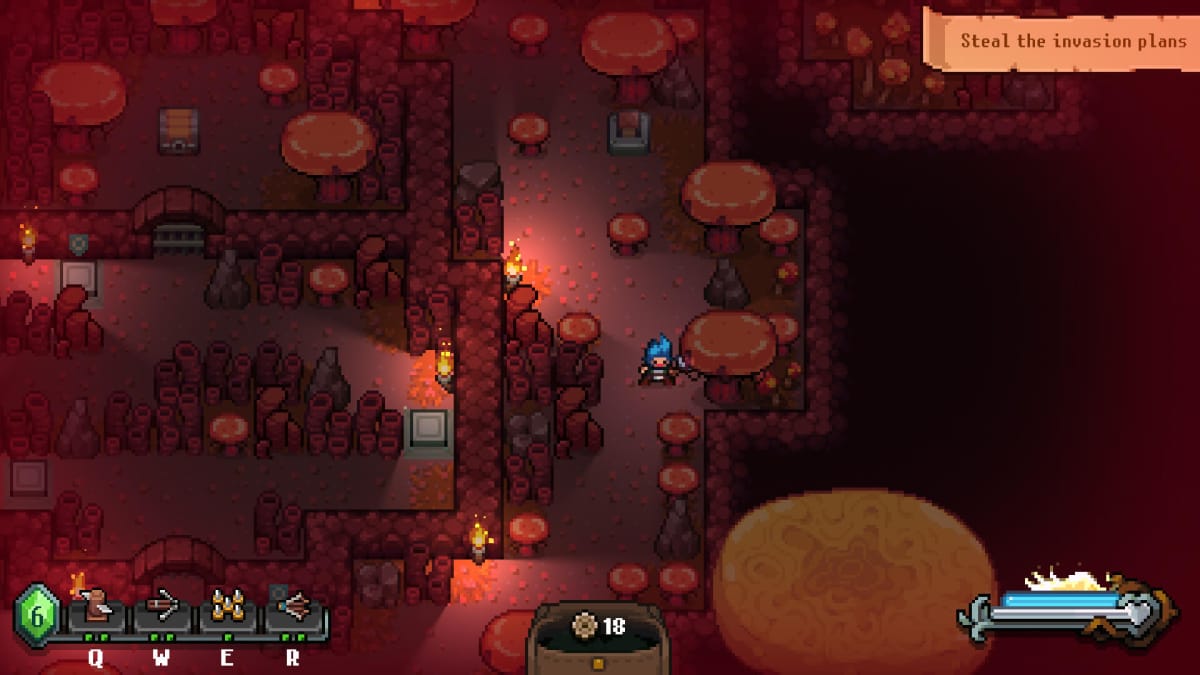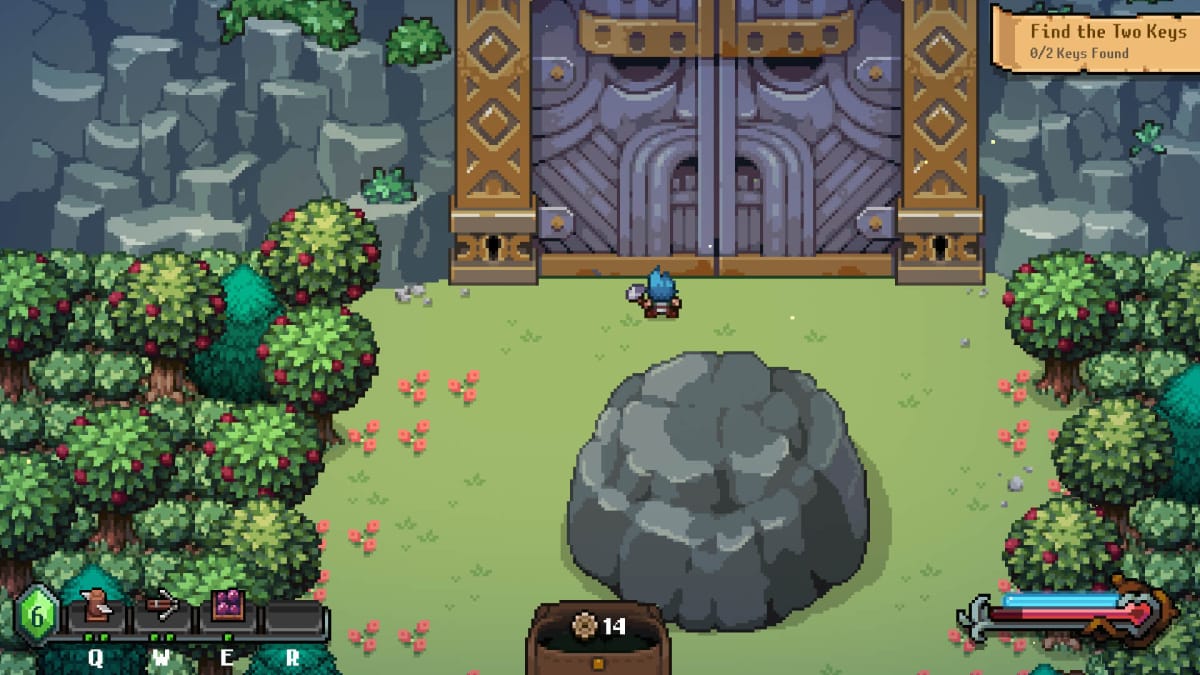I’ve never been a huge fan of tower defense games, and if I’m being honest, I don’t know anyone who is particularly devoted to the genre. There are certainly some games in the genre I’ve enjoyed in the past, but it mainly reminds me of the bygone era of flash games. Dwerve proudly proclaims to be a daring mix of tower defense and Link To The Past, a statement that the game’s delightful story-driven experience mostly delivers on, offering up an adorable, strategy-focused, and frequently challenging adventure that made me reconsider the untapped potential of the humble tower defense game.
At the core of Dwerve lies a fun gameplay cycle that involves placing a variety of ranged and melee ‘turrets’ in increasingly complex tiled areas to defend yourself from oncoming waves of enemies. Each enemy has a different style in which they will pursue you and engage with your turrets, and a variety of enemies will be employed to keep you constantly vigilant. Turrets will take damage easily, and you can only place a few turrets at a time, meaning the average Dwerve session will have you running as fast as your little Dwarf legs can carry you to frantically replace your crossbows, spinning blades, and spike traps in the best positions.

These tower defense sections will pop up abruptly in various sections of the game’s sprawling, linear map that you’ll be moving through to progress the story. Although these encounters still happen in pre-set arenas, with obvious enemy paths and tiles where turrets should obviously be placed, the speed and abruptness of these encounters in addition to the kinetic energy of the turret placement often give the impression of a tower defense game that’s in arcade mode. This is especially true when you consider that one misplaced turret will quickly cut your dwarf life short: you can almost imagine where you’d insert the quarters to give it another go.
It’s worth pointing out alongside that Dwerve is also fairly challenging. In fact, it thrives on its challenge. It’s nothing that the most seasoned tower defense experts couldn’t handle, but I’m more than willing to admit that there were multiple sequences that caused me to struggle, including a lot of the final area in which Dwerve forced me to carefully consider not only each turret placement, but the exact moments to switch placements. There’s an exhilarating feeling to swooping in at the last second to save your turret from death, or switching a melee turret to a ranged one just before a massive wave of bats approaches.

Thanks to this challenge and clever design in how it unfolds gradually, Dwerve proves to be fairly consistently engaging throughout, offering up enough variety in terms of its enemies, attack patterns, and new turret options to keep players adequately invested. There are also bosses at the end of each major section of the game, which whilst a lot less strategy-focused than the game’s usual encounters, do require you to lean on the principles of rapid turret placement and choosing the right tools for the job.
In between its combat sequences and bosses, there are brief puzzle moments, mainly involving flipping switches and levers in the right order to find a route to progress forwards. These puzzles are adequate for their purpose, but I did find myself wondering what the game could look like if it had an expanded focus on puzzles alongside its tower defense elements, as these short interstitial moments made it clear that the style of Dwerve - in both its lovingly crafted environments and bursts of strategic combat - would make it well suited for more complex puzzles to serve as downtime. There are also some brief segments where you must employ stealth to avoid becoming overwhelmed with enemies, but how this is implemented mechanically is ultimately underwhelming, as you’re not provided with extra tools outside of standard movement to sneak around. Add in the fact that it’s hard to identify the exact ‘cone of detection’ that each enemy has, and it makes for a frustrating chunk of gameplay that I’d rather not repeat.

Outside of these personal disappointments, my main frustration with Dwerve arrives in its story. For a game with such a detailed retro art style and interesting ideas in the application of its gameplay genre, the narrative doesn’t really do it justice, with a fairly generic fantasy world and its internal conflict taking center stage. Although there was some chuckle-worthy dialogue scattered amongst the game’s ample dialogue text boxes, the overarching narrative wasn’t quite bold enough to keep me gripped.
Dwerve | Final Thoughts
When you consider the complete package of Dwerve, however, there’s a lot to love about this first outing from Half Human Games. The game’s primary system is neatly crafted, and offers enough challenge to make learning it incredibly satisfying. At its best moments, Dwerve offers a unique mechanical satisfaction that feels entirely unique in its frenetic nature. It’s a game that is sure to satisfy fans of the genre, and if you’re not quite a tower defense enthusiast, it may just make you one.
TechRaptor reviewed Dwerve on PC with a copy provided by the developer.
Review Summary
Pros
- Excellently designed tower-defense combat
- Adorable and detailed pixel art style
- Very challenging in a way that seems fair
Cons
- Weak stealth and puzzle sections
- Underwhelming story
Have a tip, or want to point out something we missed? Leave a Comment or e-mail us at tips@techraptor.net







